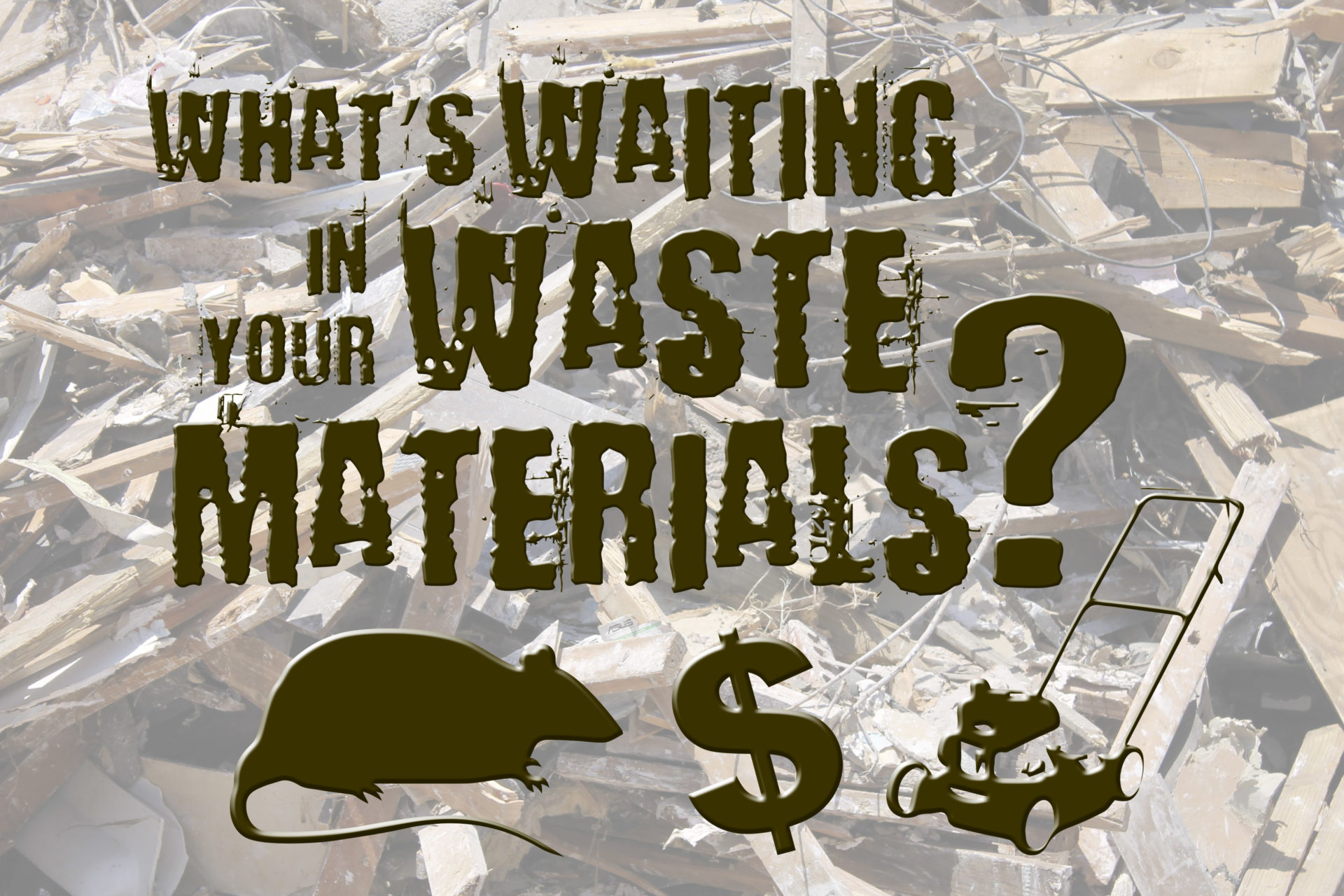
In more than 25 years in the grinding and recycling industry, we’ve learned there’s always more than meets the eye in a pile of waste materials.
Whether it’s a pile of pallets or household garbage, there’s some good and some bad hiding under the surface. You can find it with the right industry knowledge, the right equipment, and the right support.
1. Opportunities
All recycling innovation starts with a shift in attitude. It starts when waste materials become viewed as opportunities, rather than opportunities.
2. Sustainable growth
Volumes of waste materials fluctuate. Demand for engineered fiber commodities shift. But grinding applications like premium landscape mulch and animal bedding are notable for their stability and growth opportunities.
3. Ratzilla
If you work in the waste handling and recycling industry, you’ve likely heard stories about freakishly large rats or other critters that come with garbage. Maybe you’ve even seen one. Fortunately, they typically have no impact on anything else you might find in the mix. Nonetheless, a list like this would be incomplete without mention of these (mostly mythical) creatures.
4. A few extra hours to focus on our core business
If your business generates waste materials, the right grinding system frees up time, reduces costs, and eliminates hassle, enabling you to focus on your core business, not on the waste.
5. A few extra hours to spend away from work
When your grinding equipment turns your waste pile into an end product pile without hassle and downtime, you have more time to spend away from your office or your loader cab. What would you do with more free time?
6. Something your processing equipment won’t like
We’ve learned that even the most innocent looking pile of wood chips might contain a lawnmower (yes, a customer fed a lawnmower into a Rotochopper grinder). A pile of pallets might hide part of a Sherman tank (that happened to a customer grinding at a military base). That type of contamination is typically rare and easily manageable.
7. Something your customers won’t like
If you need to separate mixed materials before grinding, a slow-speed shredder can also help improve your sorting efficiency (so your wood fiber mulch is just wood, not aluminum, plastic, and other contaminants). A clean product makes for happy customers.
8. Information
Successful recyclers are increasingly monitoring and analyzing operating data, so they know what’s going in and what’s coming out of their grinding equipment. The more you know, the more you can control. Colored mulch producers, for example, are using remote monitoring solutions to consistently control factors like their colorant and water usage.
9. Hidden costs
Seeing the end product pile hiding inside the waste pile is only the start. You have to carefully plan and execute every step in the process of converting raw waste to end products. Otherwise, hidden costs can quickly reduce your margins. That’s why the right industry knowledge is just as important as the right equipment. Check out strategies for eliminating hidden costs and maximizing grinder profitability.
10. Something worth copying
Success leads to imitators. For example, the success of the colored mulch market brought forth the colored rubber mulch market. The rubber tire recycling industry saw an opportunity and began marketing a product to compete against wood fiber mulch. A higher quality product will draw customers to your business. Make sure your product stands out with the right grinding equipment.
11. Something different from what you find today
Markets change. New opportunities emerge. The most successful grinding operations are often the ones able to adapt to new opportunities with the versatility to process different raw materials and make different end products. A versatile grinder lets you diversify and create new end products at the lowest cost.
12. Cleaner water
Most people consider it counterintuitive, but cleaner water can start with dirty grinding applications. Compost made from yard waste, food waste, animal mortalities, and other forms of organic waste can actually increase the quality and water retention ability of the soil, while preventing contaminants from entering the water and air.
13. New technology
The ability to see the value hiding in a waste pile is the driving force behind recycling innovation. If there’s value in a waste pile, someone will invest in R & D to release it. But the right technology is only part of the solution; see below.
14. Something that’s not recyclable—yet
Of course, “recyclable” is a complex term. The recyclability of a material depends on local markets and many other factors. New methods and technology are constantly being introduced to reduce the amount of waste in landfills. It’s important to remember that many commonly recycled materials were once considered non-recyclable.
15. Something that other people won’t understand
Not everyone will see the value—or reasoning—behind the products you’re recycling. Often, the public incorrectly views certain industries as wasteful and environmentally harmful, despite widespread recycling efforts. The asphalt paving industry has been working against that type of misconception for decades.
16. Something that’s not really there
Misconceptions about waste materials often do more to hinder recycling than a lack of technology or enthusiasm. It doesn’t actually have to actually exist for it to impact your business. Just like every other item on this list, the key is to start with the right knowledge.
Learn more
What’s hiding in your waste materials? Find it with Rotochopper grinding equipment. Ask your Rotochopper factory-direct sales representative for more information.
